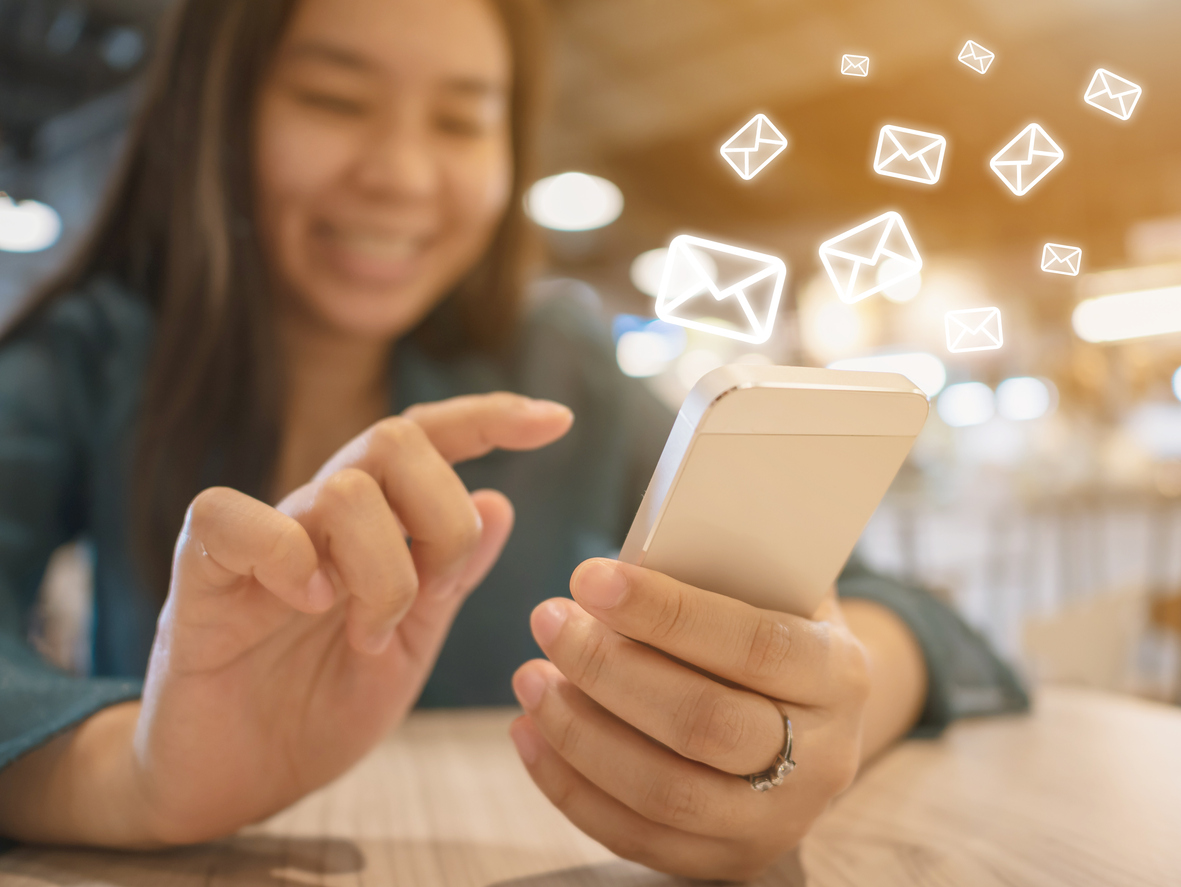Email marketing is a tried and true channel to engage consumers, boost retention and encourage brand loyalty. Numerous research studies discuss the positive ROI and low cost of email marketing.
Now more than ever, email has proven to be cost-effective and one of the best ways to communicate with consumers during the Covid pandemic. According to research by Campaign Monitor, for most industries, open rates increased exponentially during the pandemic.
In research by Twilio, email was also found to be the preferred medium of brand communication for 67% of consumers, with social media coming in second at 45%. For 73% of those polled, they are never, rarely, or only occasionally annoyed by the emails they receive in the flood of COVID-19 messaging.

For consumers and brands alike, more people have been relying on email.
However, knowing what types of messaging consumers will respond to is a bit trickier. It takes testing and re-testing to fin-tune messaging and optimize responses. To help understand exactly what consumers are looking for when they engage with brand emails, Campaign Monitor recently surveyed consumers to find the answers.
Are customers more likely to make a purchase after receiving an email that clearly offers a discount or reward?
As anticipated, most consumers indicated that discount emails increased their purchases. However, they were significantly more inclined to open a promotional email from a brand they recognized than from one they didn’t know. Brands need to consistently engage with consumers to remain memorable and enhance brand awareness to maximize the effectiveness of discount emails.
Are customers more likely to open an email that addresses them by name?
Most people responded that neither agreed nor disagreed that they’re more likely to open emails that address them by name. Using a first name is more expected than anything and many consumers simply have come to expect this. When personalizing emails, marketers must get creative about the types of personalization they are using.
Are customers more likely to make a purchase after receiving a birthday email?
The majority of respondents said they “somewhat agree” or “strongly agree” that a birthday email leads to a purchase. This shows that personalization works, and marketers should test different types to understand what works best for their audience. If using a birthday to personalize emails, be sure to ask for this in subscriber settings or use a third-party data vendor to append this info to your list.
In other recent research by SparkPost and SurveyMonkey, consumers, primarily retail, were asked how they feel about marketing communications from their favorite brands.
- Over half (53%) of survey respondents report they “always” or “usually” open emails from brands when it includes information about a product
- Over 92% of respondents have at some point unsubscribed from a brand’s email, most often because “Emails come too often” (60% of respondents agree), followed closely by simply having lost interest in the brand” (54%), and “irrelevant content” (50%)
- A deal or discount is the top email subject line driver of opened email (58%)
- Personalized communication is highly successful, but up-and-coming tactics aren’t moving the needle for brands: only 12% of consumers report they care to see their name or an emoji (7%) in email subject lines
Consumers also reported that they seek surveys or other forms of post-purchase follow-up:
- Post-purchase, 60% of respondents use general online research to understand a product, compared to 27% using specific information, instructions and/or tutorials on the company’s website. What pales in comparison is the 19% of respondents that look to post-purchase email as a direct source for such information
- Email is a great tool for brands to use for re-engagement that then drives future revenue. Sixty-four percent of consumers want information featuring special deals/discounts on future purchases, and they also like product recommendations to be shared via email as well
- 23% need information on upcoming changes to products and services
- 20% want follow-up with next-purchase suggestions
What are some of the top reasons unsubscribe from your emails? Unsubscribes are cited to be one of the biggest costs for B2C companies because they lose the opportunity to consistently engage with and convert new and existing customers.
SmartHQ asked 1,100 consumers why they unsubscribe from a brand’s emails:
- 83% – Brands send me too many emails
- 58% – Brands send me products I would never buy
- 28% – Brands send me too many discounts and sales
- 24% – Brands send me items I already bought
Email should continue to be one of the primary channels for communicating with your customers. However, make sure you are listening to what your customers want in order to provide them with emails that will engage and delight.

